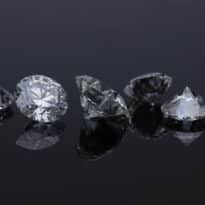Following on from last week’s article, the Prudential technical team answer more questions most commonly asked around the pension death benefits in respect of tax on payments (income and IHT) and nominations (individuals and trusts).
Tax on payments (income and IHT)
Q. What were the changes to taxation of death benefits introduced on 6th April 2016?
A. A lump sum death benefit paid between 6 April 2015 and 5 April 2016 would have been subject to the special lump sum death benefit (SLSDB) tax charge of 45%. From 6 April 2016, when a taxable lump sum death benefit is paid directly to an individual, this is liable to income tax at the marginal rate for the beneficiary.
Where the lump sum death benefit is paid to a non-individual (e.g. a trustee, except a bare trustee, or a personal representative) the SLSDB tax charge of 45% still applies. The lump sum is not treated as income of the recipient and the estate/ trustees cannot reclaim any of the SLSDB charge. However, if the lump sum is paid to a trust, there are provisions allowing for tax deducted to be reclaimed by the beneficiary once they receive funds from relevant trusts.
More information in PTM073010 (https://www.gov.uk/hmrc-internal-manuals/pensions-tax- manual/ptm073010) .
Q. My client has a dependant’s drawdown plan which was set up following the death of her husband and the income she receives is taxable as he died over age 75. When she dies will the benefits be taxable or tax free to her beneficiaries?
A. This will depend on what age she is when she dies. If she dies before 75 the benefits will usually be income tax free to her beneficiaries and if she is over 75 they will be taxable.
Q. Where someone receives a dependant’s scheme pension from a defined benefit scheme is this tax free if the member dies before age 75?
A. No, a dependant’s scheme pension is always subject to income tax regardless of whether the member dies before or after age 75. However, it is not a benefit crystallisation event and there is no test against the deceased member’s lifetime allowance
Q. My client died aged 73 with a drawdown pot. This will pass to her husband who elects to take dependant’s drawdown. We know income taken within the next 2 years is paid tax free but, what rate of tax is paid after the 2 year window passes?
A. All income taken will be paid tax-free until the fund exhausts or the widower dies, whichever happens first. The two year rule is not in relation to the amount of time the benefits are paid for but instead relates to the point at which the death benefit option(s) is selected and settled. In this example the two year rule is satisfied at the point the death benefit is designated to drawdown.
Q. Following on from the previous question, when the widower dies, any remaining funds will pass to his son on a successor drawdown basis. Does this continue to be paid as tax- free income?
A. This depends on the widower’s age when he dies. This resets the tax basis. If he dies before reaching age 75, successor’s income can be paid tax free, however, if he dies after reaching age 75, then income will be taxed at the son’s marginal rate.
Inheritance tax
Q. Is it correct that pension death benefits are always outside of the deceased’s estate for IHT, and if not, when may pension death benefits be subject to IHT?
A. There are several scenarios (/knowledge-literature/knowledge-library/iht-pensions) where IHT may apply. IHT may apply where:
1. the estate has a direct entitlement to the death benefits, ie from plans not written under trust, or continuing annuity payments until the end of any guaranteed period etc.
2. there is no scheme trustee/ administrator/ provider discretion allowed within scheme rules or plan terms & conditions.
3. the client provided a binding nomination (NB only if the scheme rules allow this). Most UK pension schemes allow members to nominate beneficiaries/ make an expression of wishes but these are generally not binding nominations. You can read more on general power over death benefits at IHTM17052 (https://www.gov.uk/hmrc-internal-manuals/inheritance-tax- manual/ihtm17052).
4. certain events occurred within the 2 years prior to death; individual or their employer made a pension contribution, pension was assigned to a trust, a pension transfer took place.
Nominations: individuals and trusts
Q. My client has nominated his second wife to receive the benefits from his pension on death, however when she dies he would like the funds to pass to his children from his previous marriage. Can he just nominate them to receive benefits after her?
A. No, once the funds pass to his wife she will then decide who she wants to nominate to receive the benefits on her death. The only way to retain control is to set up a ‘by-pass trust’ (commonly referred to as a spousal by-pass trust). The client then nominates the trust to receive his death benefits and the trustees of the trust distribute the funds taking in to account his instructions. For example, to pay his wife a sufficient level of income during her lifetime and on her death to pay income to his children. This is covered in more detail in our spousal bypass trust (/knowledge-literature/knowledge-library/spousal-bypass-trusts-facts) article.
Q. My client wants to nominate his son who is a non-UK resident, is this allowed?
A. Yes, there are no restrictions on who the client can nominate as a beneficiary. However, you should be aware that if the beneficiary is a non-UK resident this may restrict the options available to them. Many providers won’t set up a new drawdown contract for an individual who is not a UK resident, so the only option may be a lump sum payment.
Q. My client wants to nominate her husband but is worried what would happen if he were to predecease her or die at the same time and would like the benefits to be paid to her adult children. How should she complete her nomination form?
A. Where a client wants to give specific instructions rather than just providing the name of the beneficiary and the percentage of benefits they wish them to receive they should complete a letter of wishes stating their instructions. This also gets around potential issues where there is any binding nomination (this will be detailed in the provider’s terms and conditions and may for example say that where the client nominates a dependant, this nomination is binding and the trustees no longer have discretion to decide who to pay benefits to).
In your client’s case, to ensure the children are nominated and can therefore be offered the full range of benefit options, wording something like ‘If my spouse is still alive on my death, I want you to give all my death benefit to them. However, if they predecease me, my pension funds should be distributed to my children names X & Y in any proportion that the Trustees see fit using their own discretion.’ should achieve this.
Q. If my client nominates his children but is concerned that they will take the benefits as a lump sum and squander it, can he insist that they choose nominees drawdown?
A. No, the only way to retain this level of control would be to have the death benefits paid to a trust and give the trustees a letter of wishes detailing how the member would like the funds to be distributed to the beneficiaries. However, the trustees will have discretion and may choose not to follow the member’s instructions so careful selection of trustees is important.
Q. Why won’t my pension scheme administrator/ insurer accept an expression of wishes from me?
A. It may be that the type of pension you have does not allow the scheme administrator/ insurer any discretion on how the death benefits must be settled. This could be the case if you have a retirement annuity contract or a deferred annuity/ section 32 arrangement.
Q. My client has assigned S226 death benefits to a discretionary trust. Can the S226 be transferred to Flexi-Access Drawdown? And can the client’s children be beneficiaries?
A. Assigning death benefits to a trust does not prevent the client taking their retirement benefits or requesting a transfer to another pension scheme. In a modern personal pension scheme, it’s likely the death benefits will be paid at the discretion of the scheme





























